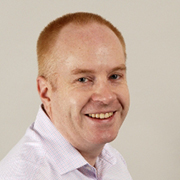A .gov website belongs to an official government organization in the United States.
A lock () or https:// means you've safely connected to the .gov website. Share sensitive information only on official, secure websites.

Tropospheric ozone is a significant health pollutant in many parts of it the world. It is produced through chemical chain reactions where volatile organic compounds (VOCs), carbon monoxide, and methane are oxidised in the presence of oxides of nitrogen. The controlling chain termination step has been used for many years to separate areas into either 'NOx limited' (peroxyl radical self-reactions dominates) or 'VOC limited' (OH+NO2 reaction dominates). This controlling regime would then guide policies for reducing emissions of NOx or VOCs, and so reduce O3 concentrations. Using a chemical transport model, we show that a third ‘aerosol inhibited’ regime can exist, where reactive uptake of HO2 radicals onto particles dominates chain termination. In the preindustrial this regime is of negligible importance other than in biomass burning plumes, however, in 1970 2% of the Northern Hemisphere population lived in this aerosol-inhibited regime. By 2014 this had increased to 21% predominantly in Asia. This is 60% more than lived in a VOC-limited regime in the Northern Hemisphere. Aerosol-inhibited chemistry significantly suppressed surface O3 concentrations in North America and Europe in the 1970s but due to air quality policy this influence has reduced. It is currently suppressing surface O3 over large areas of Asia. This third photochemical O3 regime leads to potential trade-off tensions between reducing particle pollution in Asia (a key current health policy and priority) and increasing surface O3 should O3 precursors emissions not be reduced in tandem.
Dr. Mat Evans is a Professor of Chemistry in the Wolfson Atmospheric Chemistry Laboratories at the University of York and the National Centre for Atmospheric Science. He earned his PhD in Chemistry from the University of Cambridge, and then did his postdoctoral work at MIT and Harvard University. He joined the University of Leeds as a NERC Fellow and then a Lecturer before joining the University of York in 2011. His research focuses on numerical modeling of atmospheric chemistry using GEOS-Chem, with particular interest in the chemistry of halogens and nitrogen oxides, and the role of clouds and ocean surfaces.
ALL Seminar attendees agree not to cite, quote, copy, or distribute material presented without the explicit written consent of the seminar presenter. Any opinions expressed in this seminar are those of the speaker alone and do not necessarily reflect the opinions of NOAA or CSL.